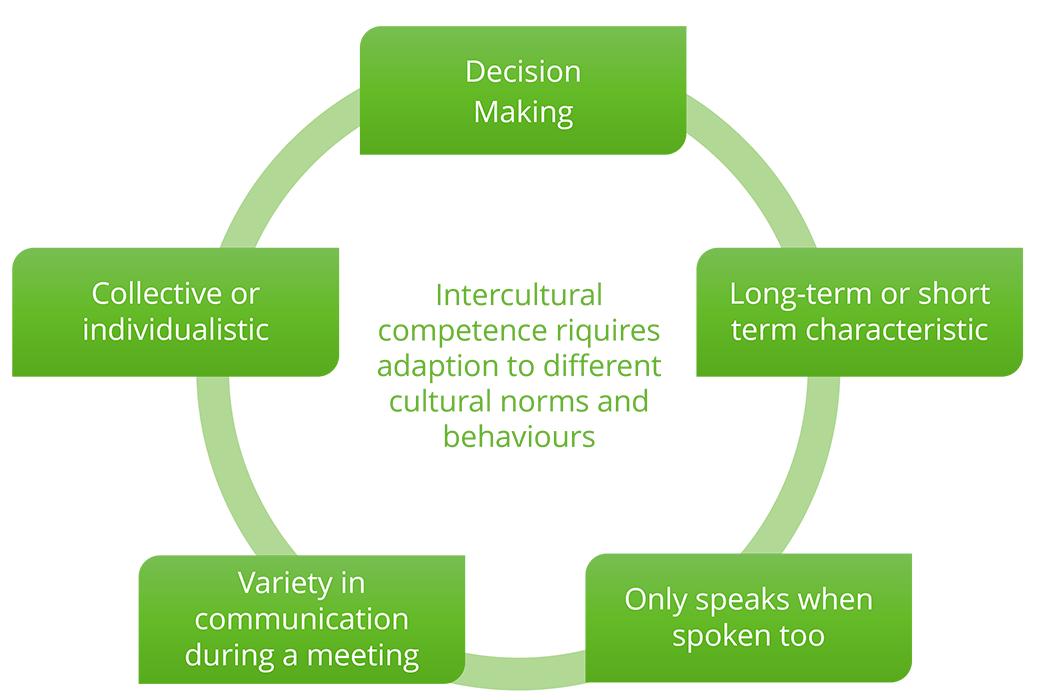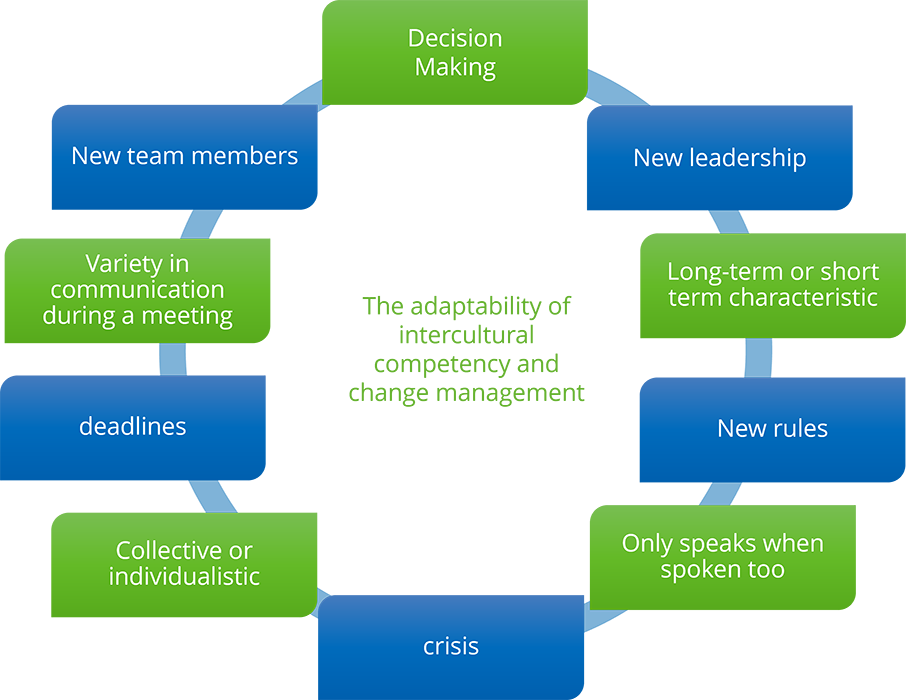Harmonizing Diversity
Navigating Cultural Differences and Change in Transdisciplinary TeamsA prominent organizational psychologist, Edgar H. Schein, stated "One of the most important roles of leadership is the creation, management, and—if necessary—destruction and reconstruction of culture. Without cultural understanding, teams may fail to bridge differences and work effectively together."
The first step to this understanding is intercultural competency. Deardorff, D.K., (2006) defines intercultural competency as "the ability to develop targeted knowledge, skills and attitudes that lead to visible behavior and communication that are both effective and appropriate in intercultural interactions."
Intercultural competencies are essential for individuals working in culturally diverse teams as they “allow group members to communicate more effectively with one another about their differences, to evaluate more accurately how their own behavior is affecting group processes, and to react in a more realistic and less judgmental way to the different attitudes and behaviors expressed by other group members” (Shaw and Barrett‐Power, 1998, p. 1318)
By embracing Deardorff's framework, which emphasizes cultural self-awareness, knowledge of cultural differences, cultural adaptation, and intercultural communication, teams can navigate the intricacies of cultural diversity with finesse.


But with transdisciplinary teams you also have change. Moreover, the integration of change management principles is essential for facilitating smooth transitions and ensuring the successful implementation of innovative solutions within transdisciplinary teams.
This brings us to the word ‘adaptability’. Webster dictionary defines adaptability as ‘the quality of being able to adjust to new conditions. Yes, adjust to new conditions. So, imagine when you bring together a transdisciplinary team from different walks of life and they are confronted with new rules, leadership or new members – what waves of adaptability the team is confronting.

Can transdisciplinary teams work with such diversity? Well, let us take transdisciplinary teams and look at them like a symphony orchestra. In an orchestra, musicians with expertise in different instruments come together under the guidance of a conductor to create harmonious music. Each musician brings their unique skills, knowledge, and interpretation to the performance, contributing to the richness and depth of the overall sound. Similarly, in transdisciplinary teams, individuals from diverse disciplinary backgrounds collaborate to address complex challenges, integrating their expertise to create innovative solutions. Like musicians in an orchestra, team members in transdisciplinary teams must communicate effectively, coordinate their efforts, and adapt to different perspectives to achieve collective success. Just as a well-conducted orchestra produces a masterpiece, a well-coordinated transdisciplinary team can generate transformative outcomes.
So how can we do ourselves to find the perfect ‘musical note’ to make the teams harmonize? Well, there are many theories and strategies offered. Here are a few, I can recommend. Radical candor, a communication concept championed by Kim Scott, provides a foundation for honest and transparent dialogue, fostering trust and openness crucial for navigating cultural nuances. Gert Hofstede's cultural dimensions offer valuable insights into understanding cultural differences and adapting strategies accordingly, while Thomas Erikson's model of understanding personalities aids in fostering effective team dynamics.
By anchoring these frameworks, transdisciplinary teams can harness the collective potential of diverse talents, perspectives, and cultural backgrounds, ultimately driving transformative outcomes in today's interconnected world.
H.E. Luccock
American Methodist minister and professor of homiletics at Yale Divinity School


